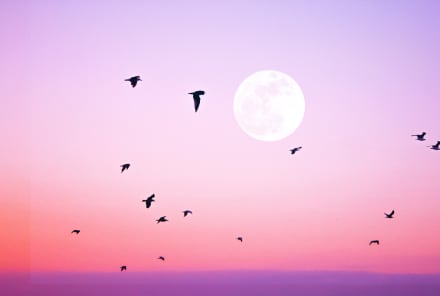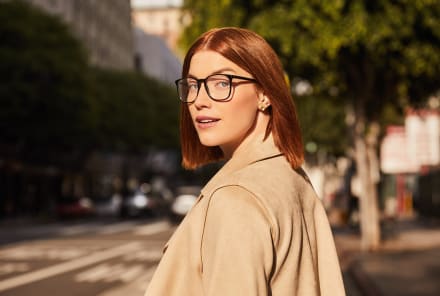Advertisement
5 Ways We're Connected: A Philosopher's Take On Modern Spirituality

Below the surface of our incoherent, competitive, and sometimes chaotic universe, coherence-building "holotropic" developments (meaning, a "moving toward wholeness") are taking place. In other words, our society is a holistic whole, even if you might think we're a bit individualistic and incongruent. These holistic developments emerge in various domains in society: in the sphere of business, in the economy, in education, in technological development, and even in politics.
Kingsley Dennis, Ph.D., a sociologist and researcher, conducted research on holotropic developments in society and collaborated with me on the following overview. Here's how spiritual, holotropic developments make their way into modern life—you could even say they're hiding in plain sight.
In our community structure:
- Communities from local neighborhoods to entire states are moving beyond conventional hierarchical structures and relations toward decentralized networks that connect people. Development in any community is increasingly reaching others and has an impact on the others.
- As people connect with one another on multiple levels, from the local to the global, empathy is growing among them, whether they are next to each other or on opposite sides of the world. Communication creates ties between people, and between people and nature.
- New media platforms are shifting social structures and organizations away from top-down forms toward decentralization and distributed power relations. Controlling hierarchies are weakening as information technologies allow greater transparency, exposing corruption and illegal or criminal intent.
In technology:
- Discoveries in science give rise to revolutionary "disruptive" technologies, such as artificial intelligence (AI), robotics, the internet of things (IoT), biotechnology, energy storage, and quantum computing. These technologies transform established structures and practices and open the door to innovation and creativity.
- Technologies that enhance connection and use connection to create transparency are replacing technologies of supervision and control. Open "cloud" technologies are becoming the standard in data collection, storage, and sharing.
- The new technologies encourage research and development in hitherto unexplored areas of potential relevance to human life and well-being, such as the study of consciousness and transpersonal communication.
- A new "media ecology"—social media, video production, gaming platforms, augmented reality, and citizen journalism, among others—empowers people to produce and share their dreams and aspirations, as well as their hopes and frustrations.
In health care:
- Health and well-being are coming to be seen as dependent in large measure on the integrity of nature. Environmental protection is moving from being a well-meaning charity to a basic requirement of healthy human life.
- The health sector is shifting from dealing with preconceived therapies and synthetic drugs to natural remedies and practices demanded and promoted by health-conscious individuals.
- People are learning to trust their own bodies more than commercially motivated prescriptions; they are beginning to rely on their own intrinsic intelligence.
- More and more people seek to live in tune with the rhythms and balances of nature. Living nature is becoming recognized as a major source and an essential resource of health and well-being. A plethora of new health disciplines are arising, such as information and energy medicine and "return to nature" therapies.
In education:
- Thanks to advances in interactive media technologies, the range and sources of learning are expanding from the local to the global. The new learning environments are international, intercultural, and interactive. They bring together learners with teachers from around the world.
- The learning environment is no longer limited to one-way communication between teacher and student. The classical classroom is disappearing.
- The objective of education is shifting from handing to students preconceived schemes that fit them into existing niches in business and society, to producing skills and techniques that help students become co-creators of their curriculum. The new generation of learners are content developers and not merely content consumers.
In lifestyle:
- Social status is no longer measured only by how much money one makes and how much luxury and ostentation one accumulates but also, and increasingly, by how one spends one's money and how sanely one leads one's life.
- Changes in values and ideals shape and shift the living environment; in many parts of the world, city, town, and national administrations are responding to demands for socially and ecologically sound environments. Megacities and dense urban hubs are decentralizing, giving way to suburban communities and rural living spaces that allow contact with peers and with nature.
Watch Next
Enjoy some of our favorite clips from classes
Enjoy some of our favorite clips from classes
What Is Meditation?
Mindfulness/Spirituality | Light Watkins
Box Breathing
Mindfulness/Spirituality | Gwen Dittmar
What Breathwork Can Address
Mindfulness/Spirituality | Gwen Dittmar
The 8 Limbs of Yoga - What is Asana?
Yoga | Caley Alyssa
Two Standing Postures to Open Up Tight Hips
Yoga | Caley Alyssa
How Plants Can Optimize Athletic Performance
Nutrition | Rich Roll
What to Eat Before a Workout
Nutrition | Rich Roll
How Ayurveda Helps Us Navigate Modern Life
Nutrition | Sahara Rose
Messages About Love & Relationships
Love & Relationships | Esther Perel
Love Languages
Love & Relationships | Esther Perel

















